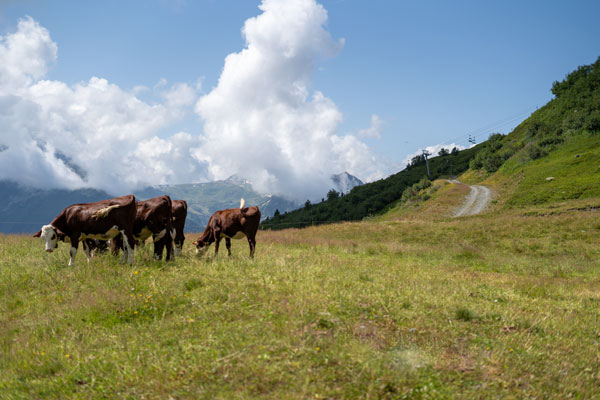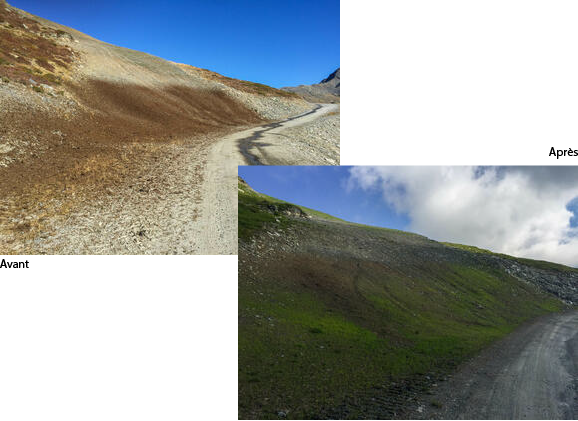GRAZING KEY ISSUES AT LA ROSIERE
La Rosière Ski Area is a Protected Designation of Origin for Beaufort cheese and its high-altitude pastures are grazed by Tarine and Abondance cows and sheeps throughout the summer. While it is reserved for snow sports in the winter, every summer the land is used for grazing and agriculture. This double use of the land keeps the resort’s economic momentum going all year round.
Beneficial coexistence and essential dialogue between farmers and ski area
Allowing animals to graze the ski area’s land has a double objective:
- It provides farmers with a vast grazing area for their animals. The territory has the Beaufort cheese PDO label. This creates real added value for the dairy product, enabling farmers to sell their cheese at a higher price, while preserving the local heritage and jobs.
- It maintains the ski area and reduces any natural hazards. Cropped grass gives the snowpack more grip, whereas long grass increases the risk of avalanche. Animals thus help "stabilise" the snowpack.
To ensure harmonious management of this shared space, regular consultation between farmers and the ski area is essential. Here are a few examples of subjects on which there is consultation:
- Periodic conventions established to clarify their rights in terms of using and driving on the 4x4 tracks.
- Summer is an opportunity for the ski area to carry out landscaping work. The farmers are consulted to ensure that this work does not disturb the grazing animals, and the work sites are marked out to make sure they do not spill over onto any grazing pastures.
- Marking of work sites to avoid encroachment on grazing land.
- Pipes are installed for the snow cannons, special traps are included to make it easier for the farmers to provide water for their animals.
- Revegetation of the land once the work has been completed and the slopes shaped.


A revegetation policy to preserve the land
In the mountains, there is a lot of erosion due to the steepness of the slopes and the flow of rainwater during storms, which washes away the soil’s plant layer. Because grass and plants are already sparse on the slopes, and because of the landscaping work the ski slopes require, a revegetation policy has been rolled out on the ski area over the last few years.
Depending on the land, several revegetation techniques are employed:
- On flat land, the soil is ploughed to help the vegetation to bed in.
- On steep slopes and land with just a thin layer of soil, extra topsoil is added.
An agreement has been set up between the local manure stocking association and the La Rosière Ski Area, in which the La Rosière Ski Area makes use of all the manure deposited in the manure store (750m3).
Revegetation, choosing the right seed:
In order to make the revegetation as efficient as possible, it is important to choose the right types of seeds to plant:
- Below an altitude of 2,000m, it is important to plant seed varieties that will be useful for haymaking and grazing, such as red fescue, Alpine wiregrass and orchard grass.
- At higher altitude, it is more difficult for the vegetation to bed in. It is therefore better to use so-called “turf” seeds such as ray grass, orchard grass and fescue.
Grazing and biodiversity
Pastoralism plays a crucial role in maintaining natural environments and preserving biodiversity.
In areas of land that have been neglected, the forest starts to take over. High mountain pastures boast a wealth of biodiversity, but if the vegetation is allowed to close in, it has an impact on the surrounding fauna. The black grouse, for example, is a species that needs a so-called “mosaic” habitat to complete its life cycle.
More about La Rosière ecosystem


















